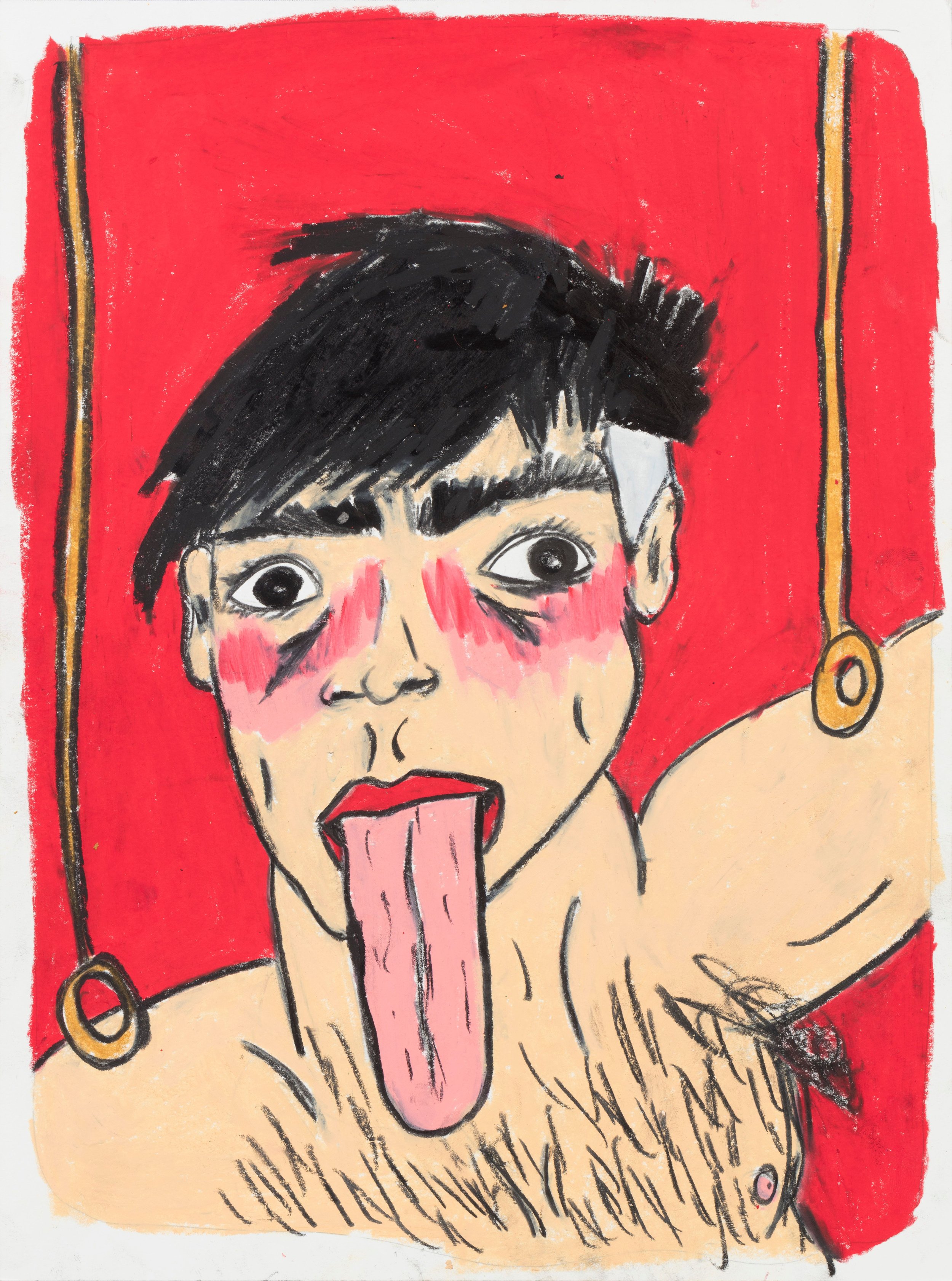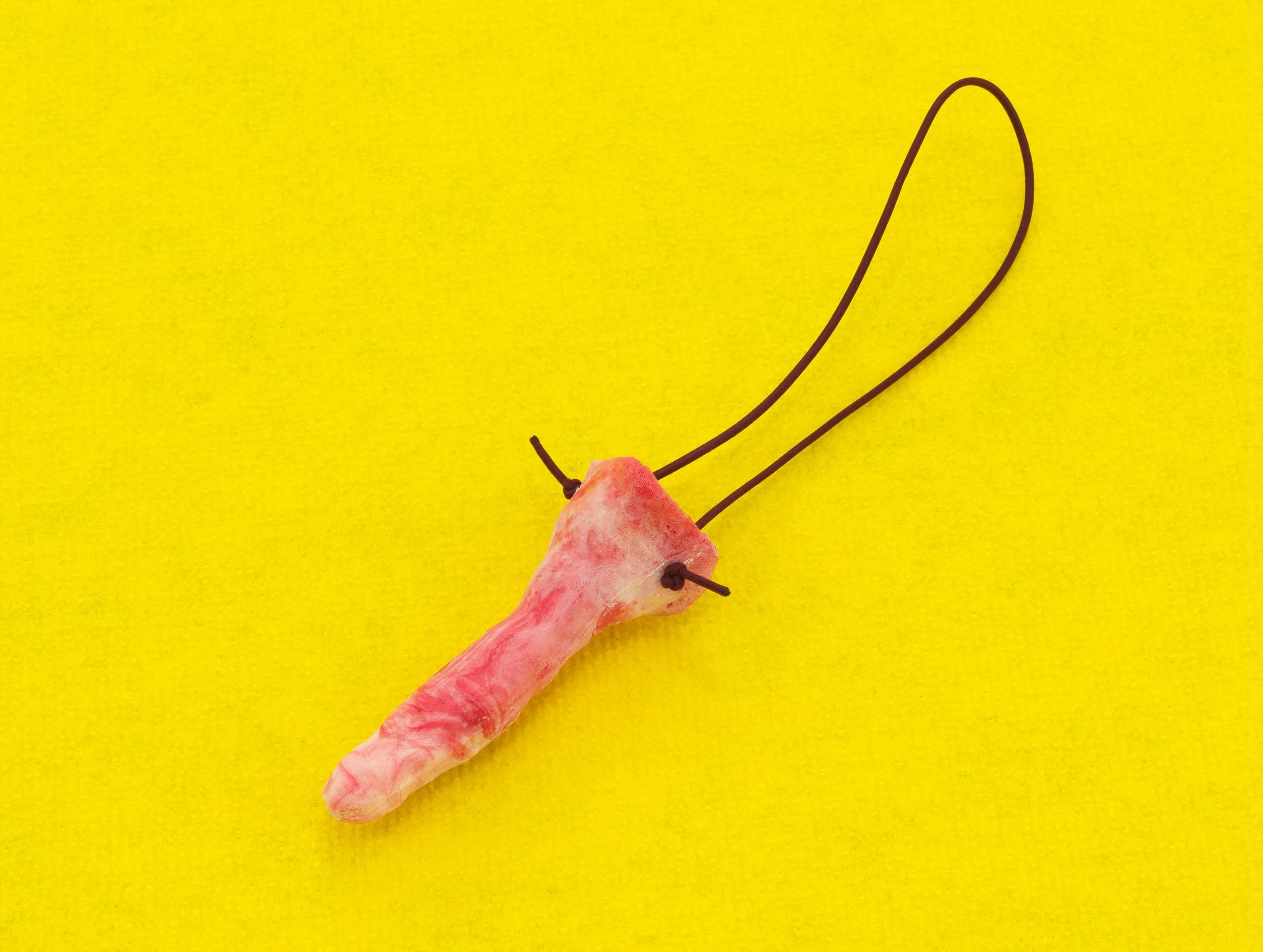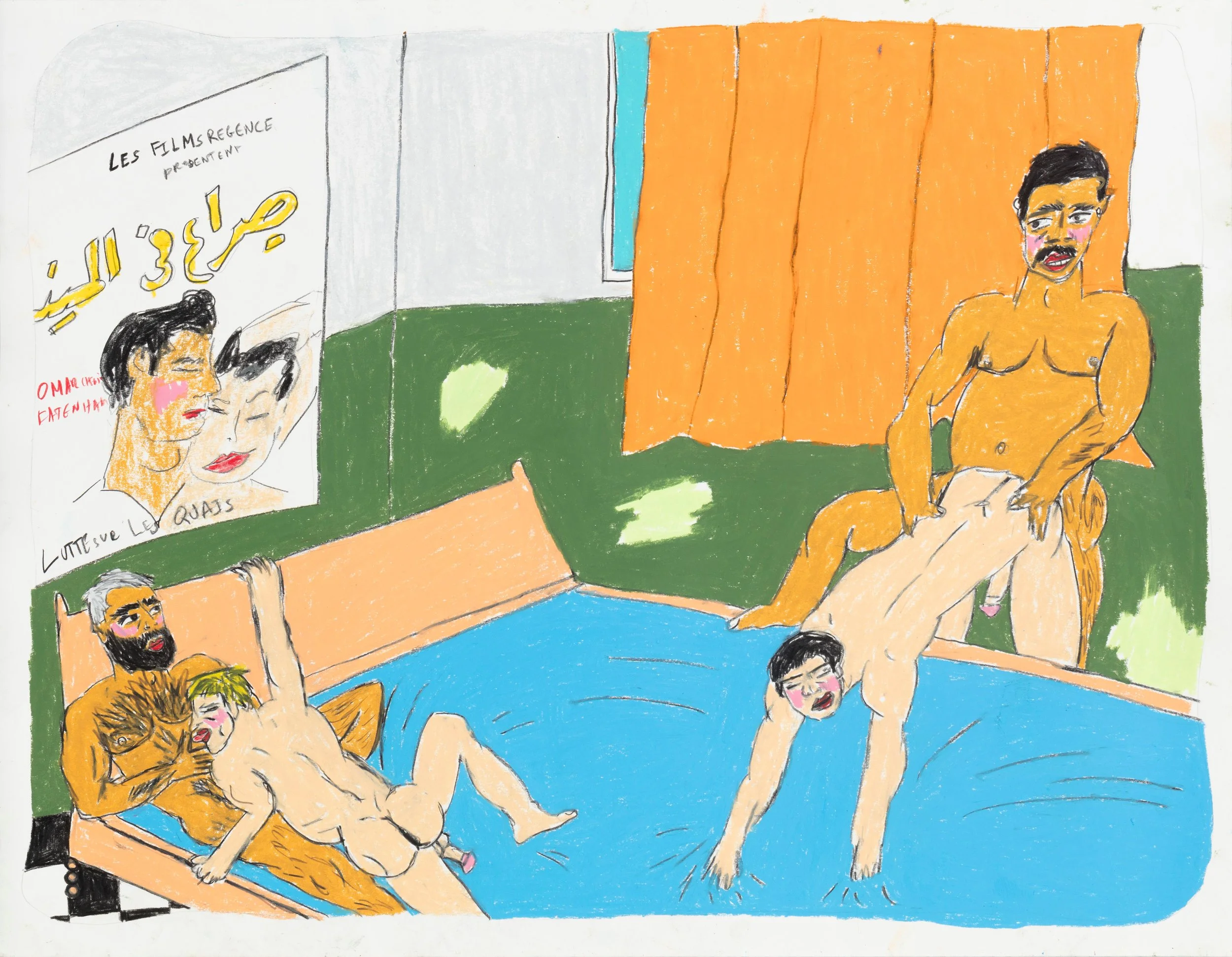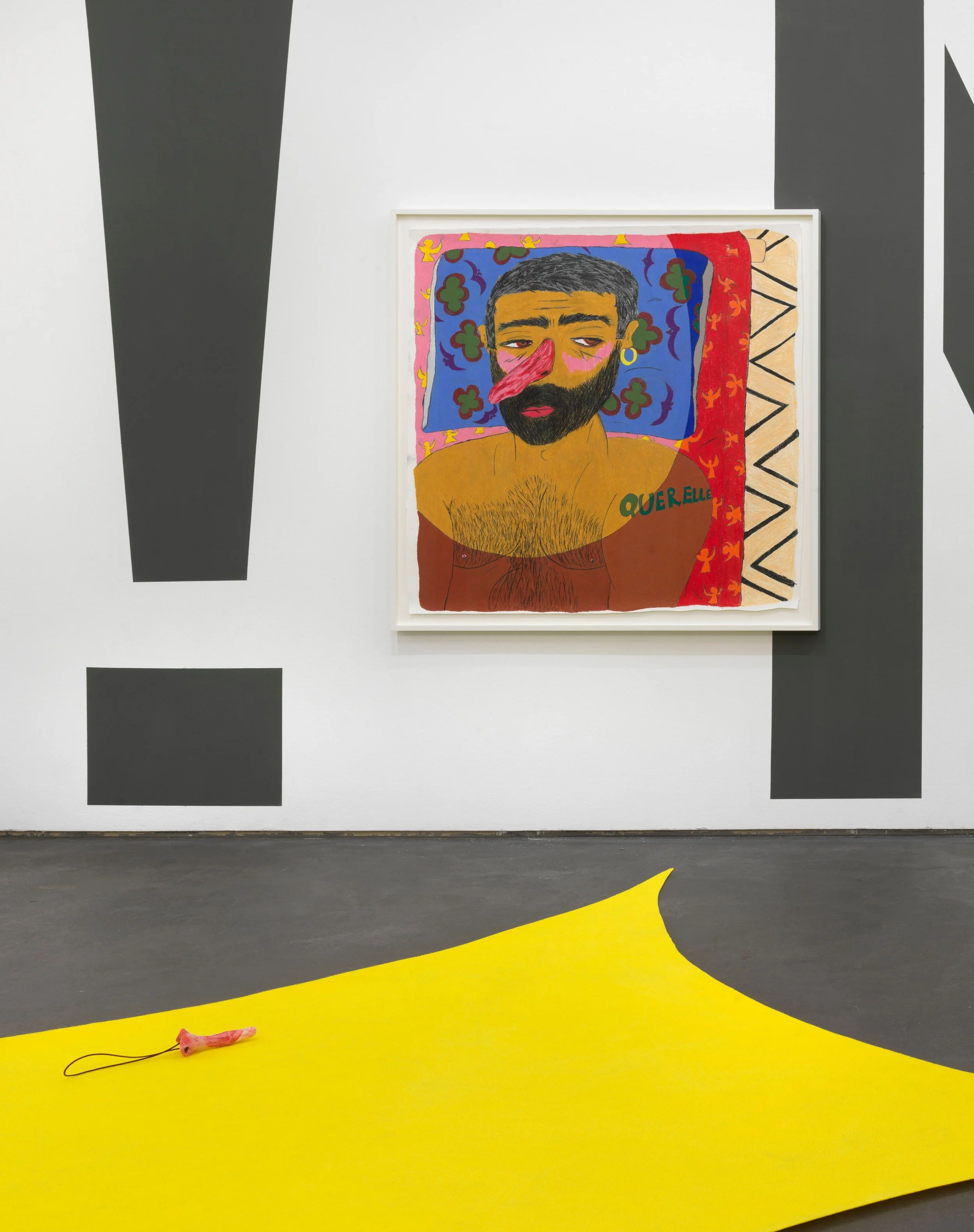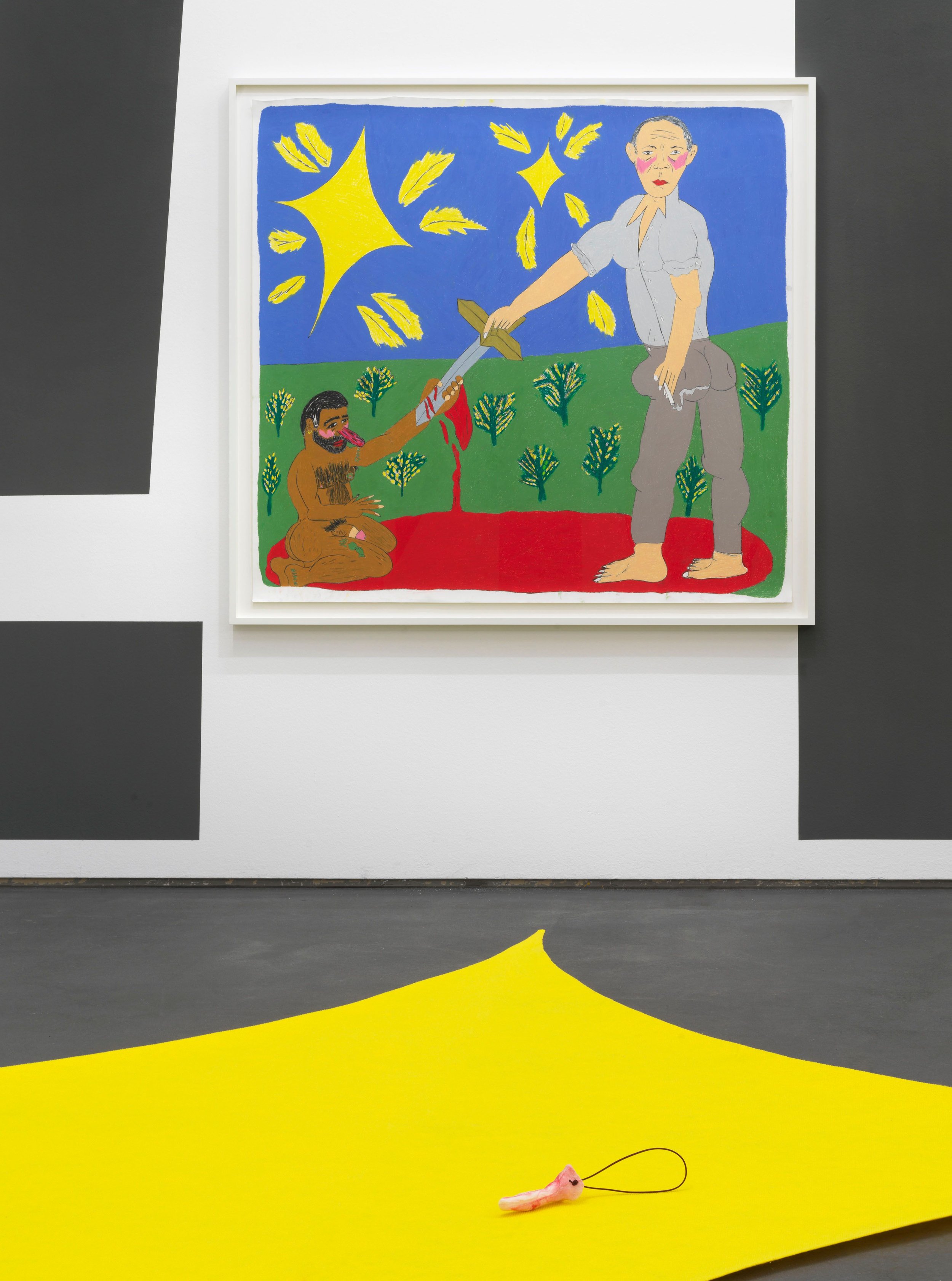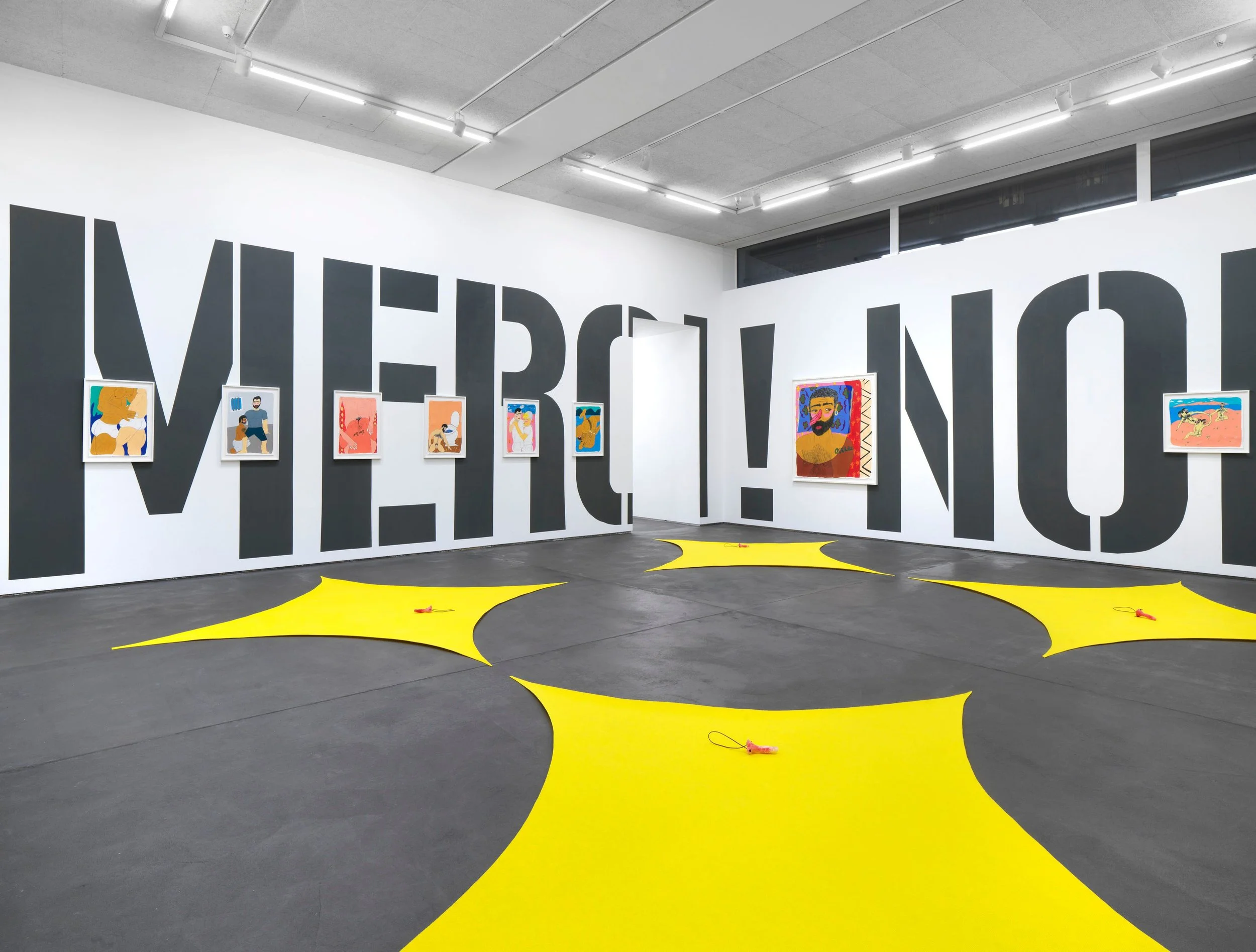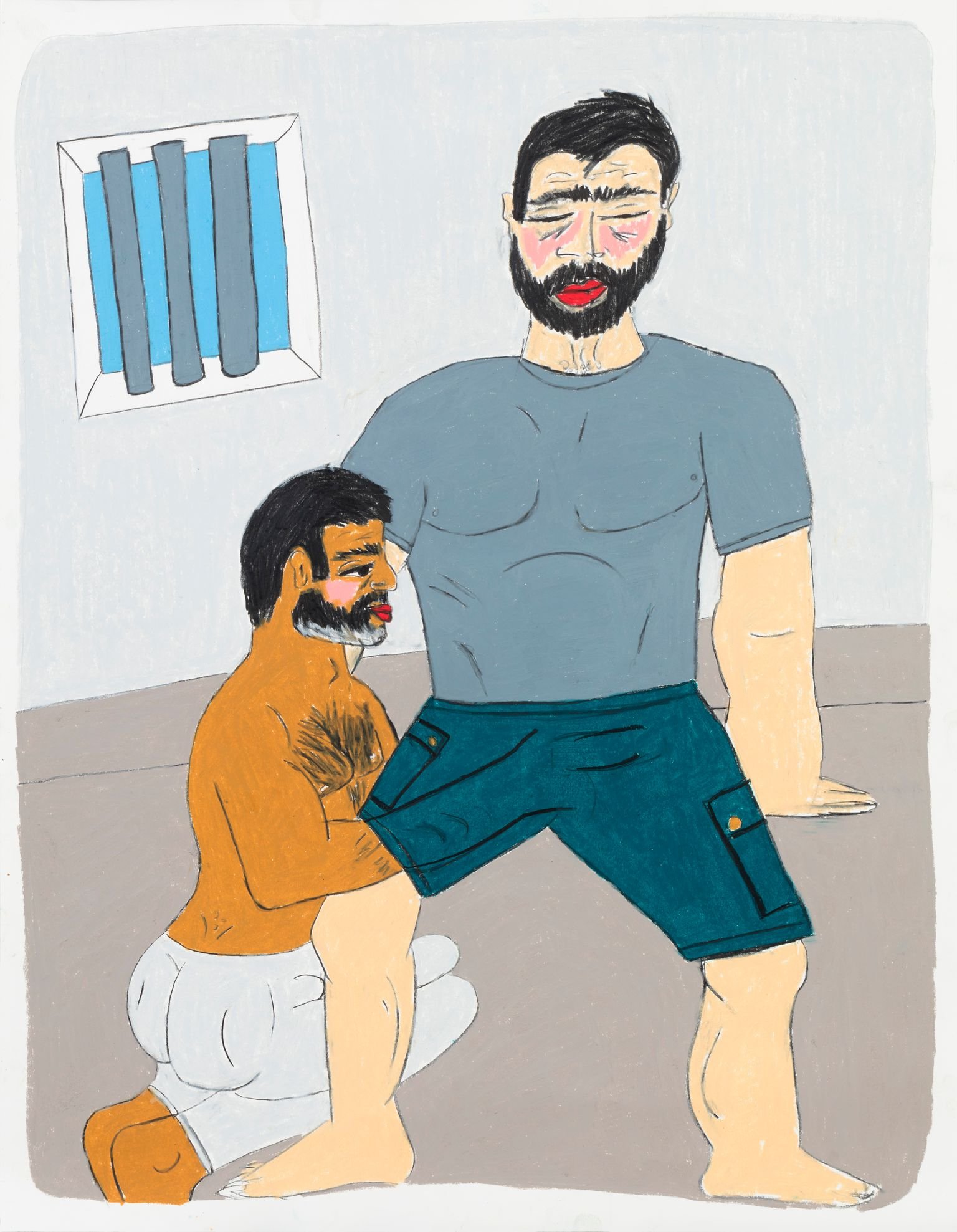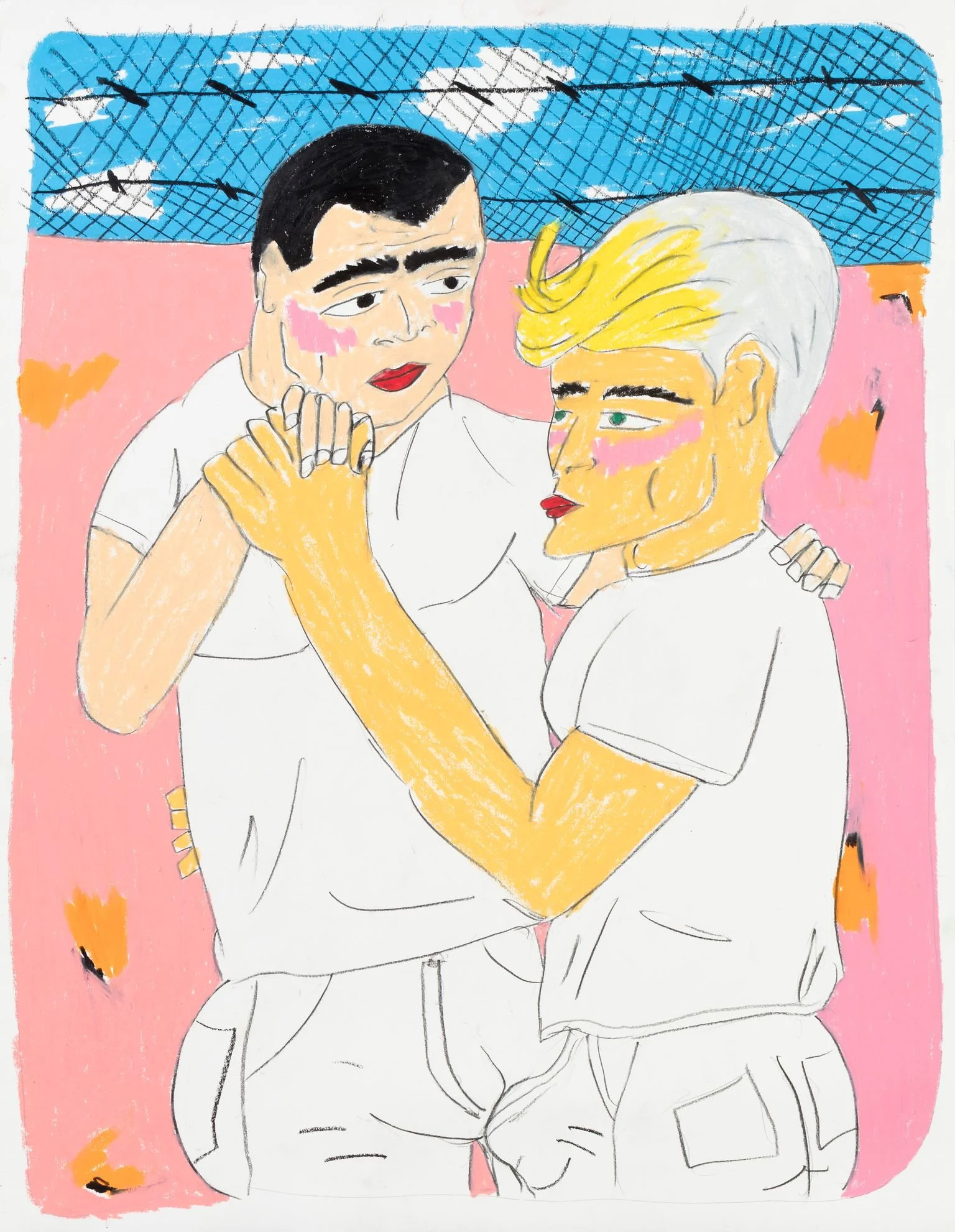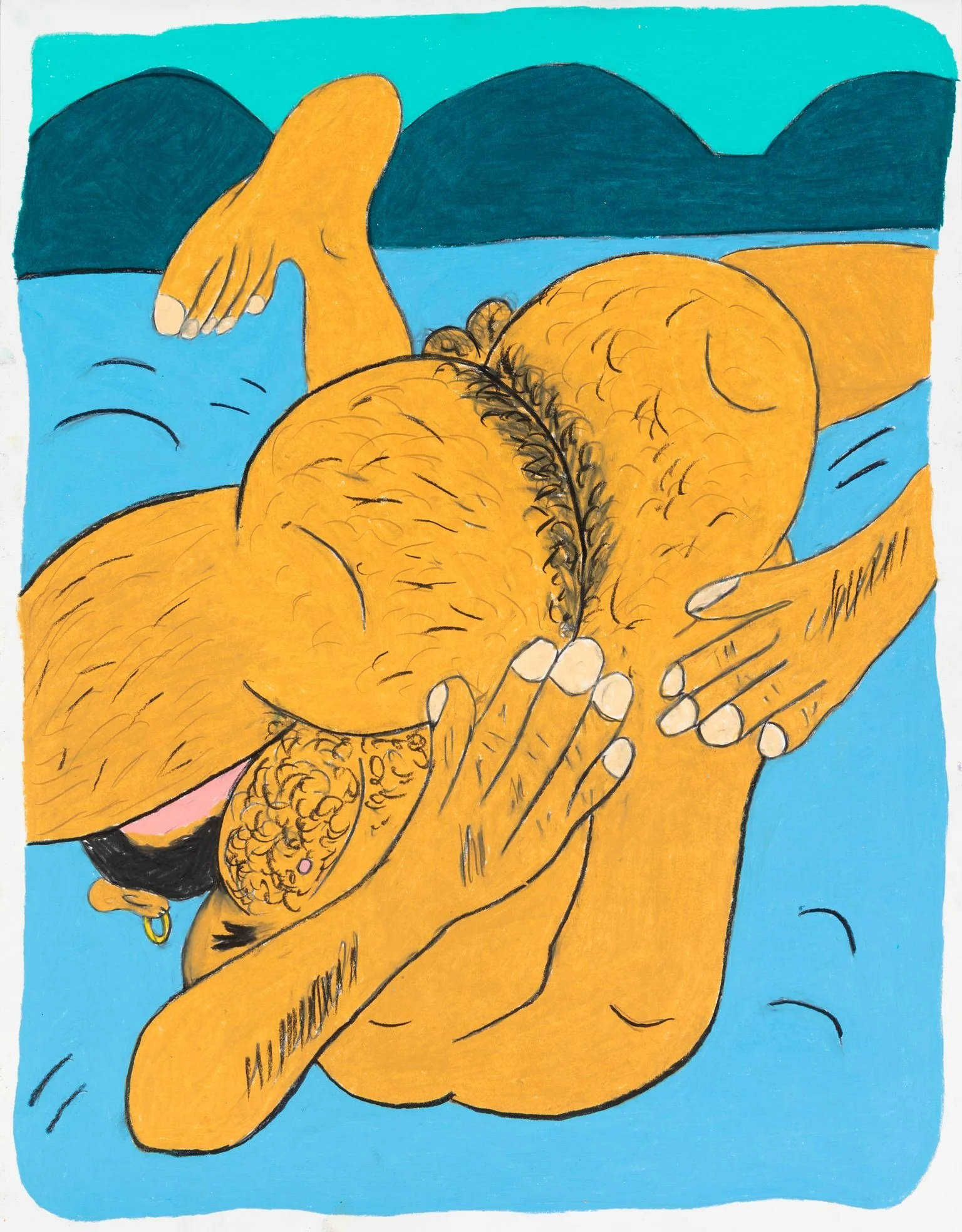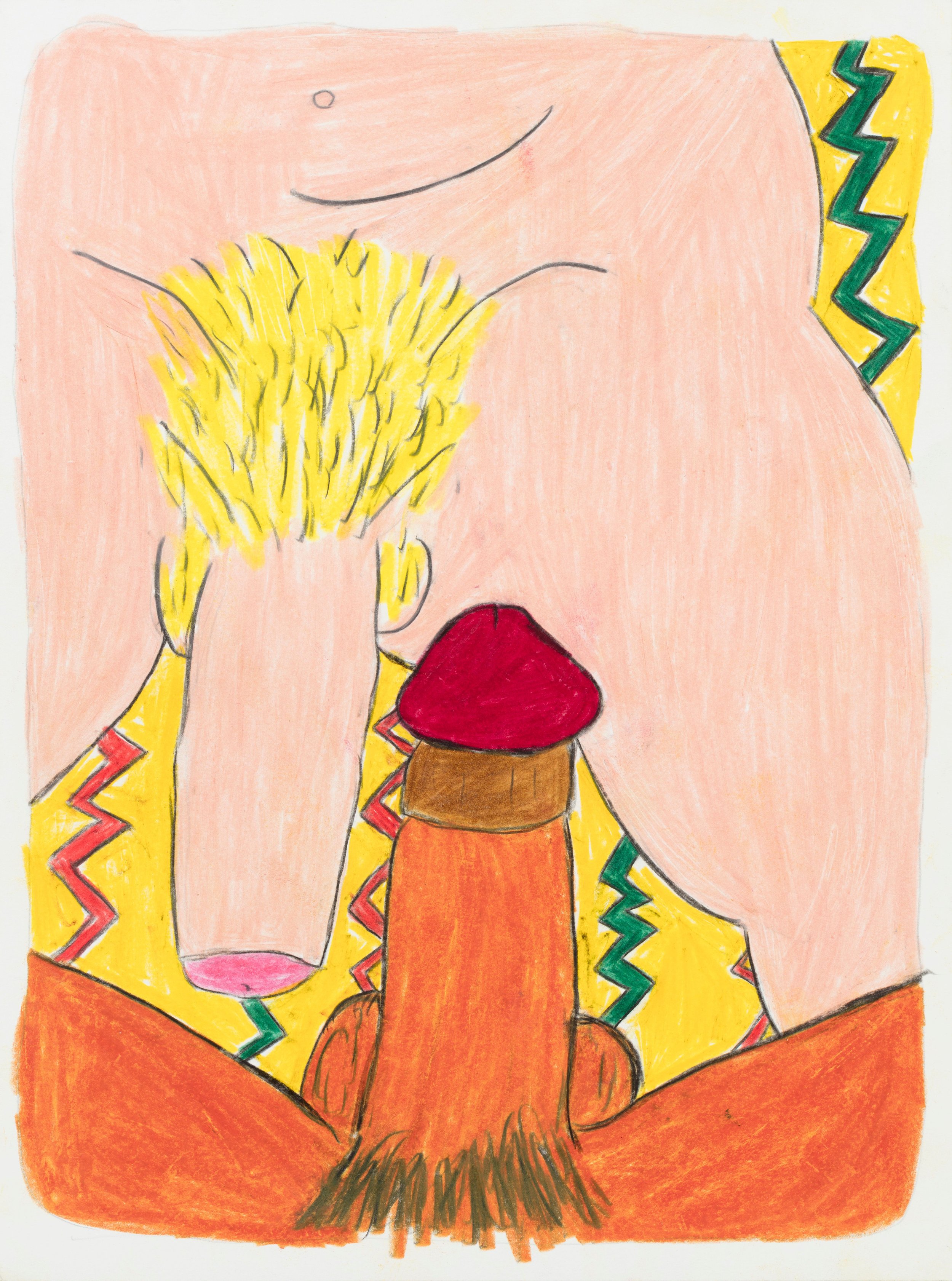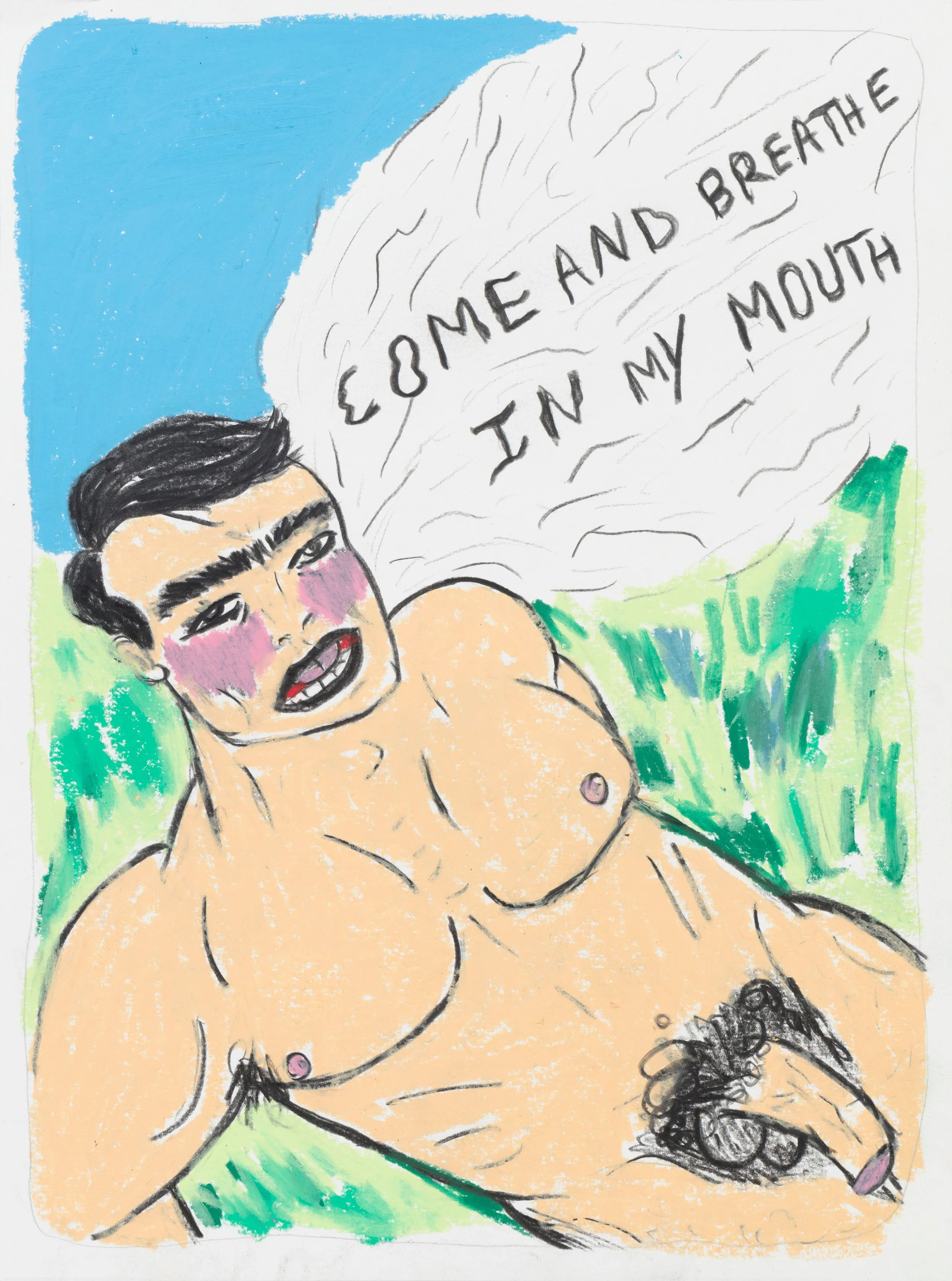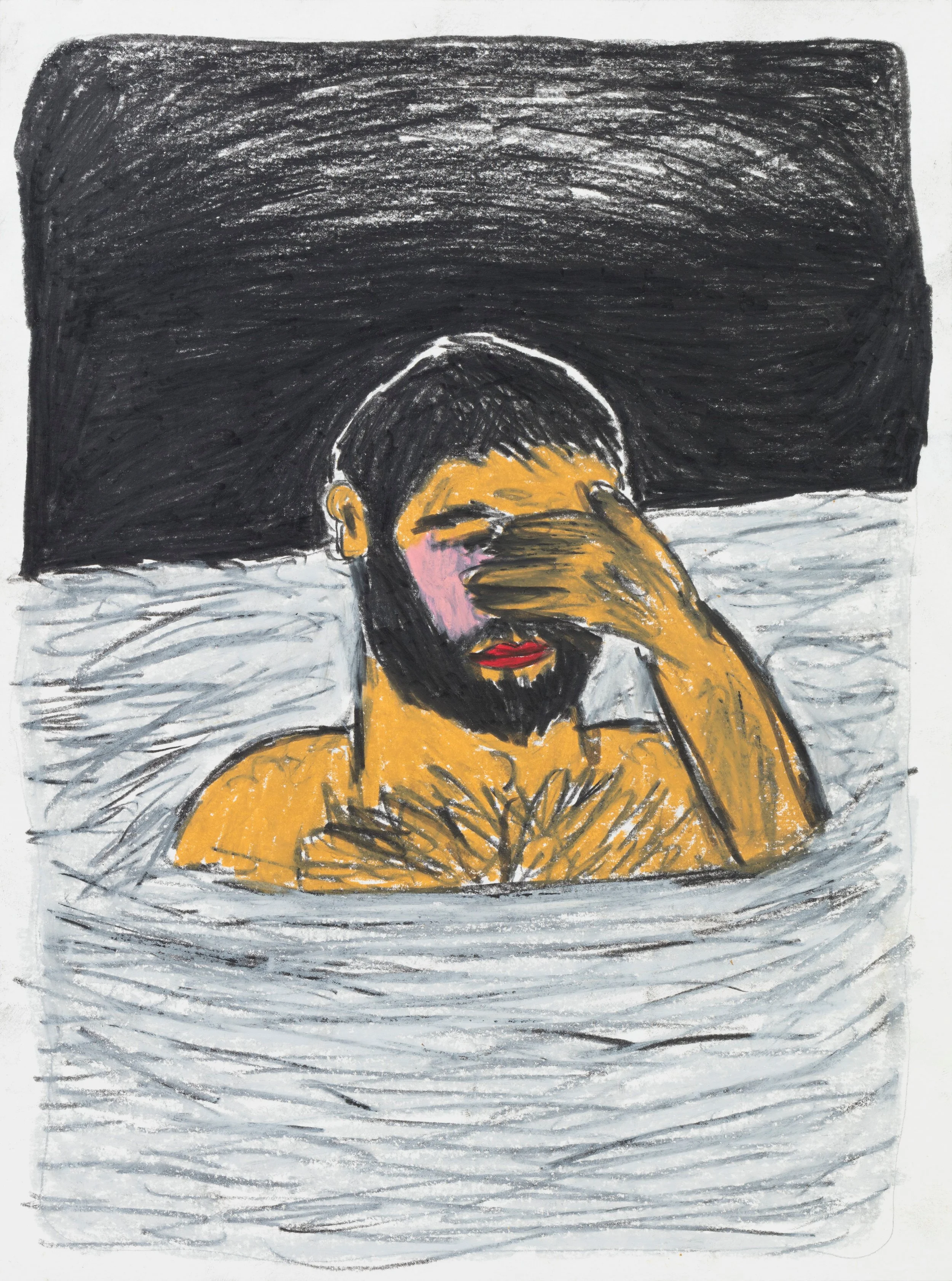Soufiane Ababri said "NON MERCI!" at Dittrich & Schlechtriem
The Berlin gallery Dittrich & Schlechtriem is one of the leading German commercial galleries. Cultured viewers from Slovakia are familiar with Dittrich & Schlechtriem thanks to the fact that the gallery has long represented Slovak artists internationally, namely Andrej Dúbravský and Katarína Janečková. However, the gallery recently launched the solo exhibition project NON MERCI!!! by Moroccan artist Soufiane Ababri. What captivated me in the exhibition was how it demonstrated the medium of contemporary drawing and its unique power, which, in Ababri's case, has the capacity to create a distinct and sophisticated visual situation within the limitations of the exhibition space. Furthermore, the subtle format and the playful aesthetic allowed the artist to talk about the complex topic of queer erotica from a very personal standpoint.
Soufiane Ababri's artistic practice is deeply based on his identity and heritage. He was born in 1985 in Morocco and later emigrated to France. Today he lives and works between Paris and Tangier. The experience of a gay Arab immigrant has shaped his work which, expectedly, engages with issues of postcoloniality but also contains new readings of the "hegemonic" French culture, mainly literature, sociology, and philosophy. The exhibition NON MERCI!!! also bears a trace of this cultural mix since its title directly refers to the famous monologue Non merci!, i.e. "no thank you", by the character Cyrano of Bergerac from the eponymous drama by the French poet and playwright Edmond Rostand, published in 1897.
Shortly after its premiere, Cyrano became a smash hit and a beloved show of the Parisian theater scene. The main character, the nobleman Cyrano from Bergerac, is a highly gifted polymath with a talent for writing, music, and knightly combat. The only problem that separates him from the image of the ideal contemporary man is his huge nose. This visual characteristic is a peculiarity that starkly contrasts the normative ideal of the knightly appearance of his time (while his mental capabilities meet the criteria). Through this juxtaposition, Rostand created a complex character of a sublime yet tragicomic hero.
In addition to the parable with a certain outsiderness in society, whether it arises through bodily otherness, ethnicity, gender, sexual orientation, or other attributes, Soufiane Ababri also draws attention to the aforementioned Cyrano's monologue Non merci. The latter manifests personal freedom and the rejection of dogmas that society generally expects from an individual. It's kind of reminiscent of the contemporary "choose life" monologue by Mark Renton from the movie Trainspotting. This moment of inspiration for the exhibition theme can be found in two drawings that stand out from the rest of the works thanks to their larger format and the fact that they represent self-portraits of the artist, here shown with a big red nose. One of them presents a redrawn selfie in bed; and on the other, the author refers to another French writer, Jean Genet, one of the absurdists of the 20th century. In the larger drawing, this figure holds a cigarette and a sword in a superior but disinterested position, under which naked Ababri kneels with a bleeding hand.
The inspirational moment is also formatively present in the performance that was part of the exhibition's opening. The performance with dancers like Mickey Mahar, well known among other projects from the performances of the German artist Anne Imhof, consisted of movement choreography, reproduction of parts of Cyrano's monologue, and repetitive overblown laughter. In an interview for 032c magazine, Soufiane mentions that Berlin's cultural environment stimulated the exhibition's performative element. "A person needs the right energy from the exterior to gain access to a certain type of work," he said about the surroundings that influenced him when creating a performance. Although the performance took place only once, it left behind a long-lasting trace in the exhibition space throughout its entire duration in the form of the artificial author's objects - the nose props worn by the performers. Their role in the performance was fulfilled, and now they lie motionless on the ground, evoking phallic meanings.
Ababri calls his bed series "bed drawings". He made them in the bed, which explains the tiny format and the distorted image perspective caused by the position of the lying body and hand. This peculiar medium carries an intimate atmosphere inherent in the environment of the bed, only emphasized by the chosen subjects of the drawings, which mainly represent sexual scenes, often involving two men of different ethnicities. In addition, the drawings also include scenes with men in a prison setting. Sometimes it seems that they capture non-consensual activity. Other times we see a romantic scene of "a dance of love" but still behind a wall with barbed wire.
In addition to drawings, the gallery walls are complemented by monumental stencil-like inscriptions NON MERCI!. Together with the scenography for the performance, consisting of four carpet stars (also found on one of the drawings) and Cyrano noses thrown around on them, Ababri devises an exceptionally visually appealing design for the exhibition, which guarantees an intense audience experience.
Staying faithful to the medium of drawing, especially smaller formats or his bed genre, represents a significant decision for Soufiane Ababri. Despite the possible pressures of current trends in art, he remains faithful to his vision and freedom to decide what and how he creates. That may be why he reached the point where he was inspired and, to a certain extent, identified with Cyrano, and in this way, he also problematizes and contextualizes his work. Cyrano from Bergerac stood up for his values, even at the cost of separating himself from society. For Ababri, this definition represents creation that is not subject to the expectations of a vast apparatus of artistic operation on several levels. Whether it is the market level, the galleries, and the people who represent them - we can talk about a complex system with its own unwritten rules, and Soufiane Ababri tells them his "No, thank you!". However, this does not mean that he is a radically anti-institutional artist who does not want to have anything to do with the establishment. On the contrary, the core of the concept of "no thank you" lies in something else. It is not an absolute rejection in which nothing more follows. In this case, no is followed by thank you, which can mean something like: "I'm not choosing anything from your menu, only my authentic and natural path. But if you let me decide which way to go, then sometimes we can cross paths and walk together towards to the same goals."
From the point of view of contemporary drawing, Soufiane's work is an excellent example of the polarity of this medium. On the one hand, it is about the pleasing aesthetics of a figurative image, a varied color palette, and a small or medium format - ideal elements of accessible art. Drawings also offer digitally easily shareable content with clickbait potential for social media. But, on the other hand, drawing is currently perceived by many art communities as a kind of second-class medium or only a proto-medium, which should be followed by "something more" - more spectacular, material, spacious, and so on. The author himself notes in the above-mentioned interview that he studied at several leading French art schools, and in his experience, drawing was always marginalized as a medium of high art.
Exhibition NON MERCI!!! demonstrates that one can play "big theater" even with a subtle drawing, especially if the theater itself is a theme of this visual art. Soufiane Ababri very casually adds other cultural, political, and philosophical layers to the drawings (in addition to the extra commentary in the form of a performance). Thus, following the more visceral or intuitive experience of Ababri's work, the viewer can continue with a further, almost never-ending study of references and other synapses with which the exhibition is built and embellished.

